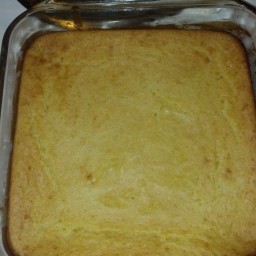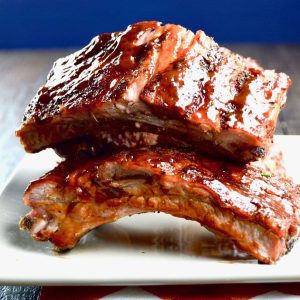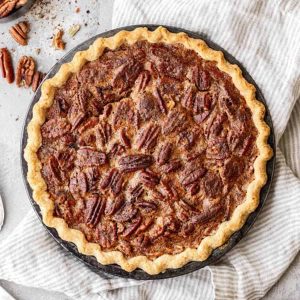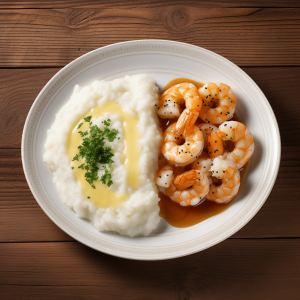
Beyond Biscuits: 5 Unexpected Ways to Use Buttermilk in Southern Cooking
Buttermilk. The mere word conjures images of fluffy biscuits, crispy fried chicken, and creamy dressings. It’s a Southern staple, a culinary cornerstone. But beyond its usual starring roles, buttermilk is a surprisingly versatile ingredient, capable of adding a subtle tang, tenderizing meat, and even enhancing desserts in unexpected ways. Forget the same old recipes; let’s dive into five unconventional applications that will redefine your relationship with this Southern treasure.
1. Buttermilk-Marinated Grilled Peaches with Honey-Lime Drizzle
Think buttermilk is only for savory dishes? Think again. This recipe flips the script, transforming the tangy liquid into a surprisingly effective marinade for summer’s sweetest bounty: peaches. The acidity of the buttermilk tenderizes the peaches and creates a subtle counterpoint to their natural sweetness. Grilling adds a smoky char, while a zesty honey-lime drizzle seals the deal, resulting in a sophisticated dessert that’s anything but ordinary.
Why Buttermilk Works: The gentle acidity tenderizes the peach flesh, allowing it to caramelize beautifully on the grill without becoming mushy. It also imparts a subtle tang that complements the sweetness of the fruit and the honey.
Recipe Sneak Peek:
- Halve and pit ripe peaches.
- Marinate in buttermilk with a touch of vanilla extract for 30 minutes.
- Grill over medium heat until softened and slightly charred.
- Drizzle with a mixture of honey, lime juice, and lime zest.
Key Benefit: Elevates grilled fruit from simple side to elegant dessert with a tangy, unexpected twist.
2. Buttermilk-Soaked Cornbread Pudding with Smoked Paprika
Cornbread is another Southern classic, but this recipe takes it to a whole new level. Instead of baking a traditional loaf, we’re creating a creamy, decadent pudding infused with the subtle tang of buttermilk and a hint of smoky paprika. This is comfort food redefined, a delightful combination of textures and flavors that’s both familiar and refreshingly different.
Why Buttermilk Works: Soaking the cornbread in buttermilk ensures a moist, tender pudding, preventing it from becoming dry or crumbly. The buttermilk also adds a subtle tang that balances the sweetness of the cornmeal.
Recipe Sneak Peek:
- Crumble leftover cornbread into a bowl.
- Soak in buttermilk with eggs, sugar, and a pinch of smoked paprika.
- Bake in a water bath until set.
- Serve warm with a dollop of sour cream or crème fraîche.
Key Benefit: Transforms leftover cornbread into a luxurious pudding with a unique smoky, tangy flavor profile.
3. Buttermilk-Brined Pork Chops with Apple-Cider Reduction
Forget dry, lackluster pork chops. Buttermilk is your secret weapon for achieving succulent, flavorful perfection. Brining the pork chops in buttermilk not only tenderizes the meat but also infuses it with a subtle tang that complements the richness of the pork. A sweet and tangy apple-cider reduction provides the perfect finishing touch, creating a restaurant-worthy dish that’s surprisingly easy to make at home.
Why Buttermilk Works: The lactic acid in buttermilk breaks down the proteins in the pork, resulting in a more tender and flavorful final product. The brine also helps the pork retain moisture during cooking, preventing it from drying out.
Recipe Sneak Peek:
- Brine pork chops in buttermilk with salt, pepper, and garlic powder for at least 2 hours.
- Pan-sear or grill the pork chops until cooked through.
- Deglaze the pan with apple cider and reduce until thickened into a glaze.
- Spoon the apple-cider reduction over the pork chops and serve.
Key Benefit: Guarantees juicy, flavorful pork chops with a tangy twist, elevated by a sweet and savory apple-cider reduction.
4. Buttermilk-Infused Coleslaw with Jalapeño and Lime
Coleslaw is a barbecue staple, but often falls flat with overly sweet or bland dressings. This recipe breathes new life into this classic side dish with a tangy, vibrant twist. The buttermilk provides a creamy base for the dressing, while jalapeño and lime add a welcome kick of heat and acidity. This is coleslaw that will actually excite your taste buds.
Why Buttermilk Works: Buttermilk adds a refreshing tang and creamy texture to the coleslaw dressing, balancing the sweetness of the cabbage and carrots. It’s a lighter alternative to mayonnaise-heavy dressings, allowing the other flavors to shine through.
Recipe Sneak Peek:
- Combine shredded cabbage, carrots, and red onion.
- Whisk together buttermilk, mayonnaise, lime juice, jalapeño, cilantro, and a touch of sugar.
- Toss the dressing with the vegetables and chill for at least 30 minutes before serving.
Key Benefit: Creates a refreshing, tangy, and slightly spicy coleslaw that’s a welcome departure from the traditional overly sweet versions.
5. Buttermilk-Based Ice Cream with Brown Butter and Pecans
Yes, you read that right. Buttermilk in ice cream! This may sound unconventional, but the results are truly remarkable. The buttermilk adds a subtle tang and richness to the ice cream, preventing it from being overly sweet or cloying. Brown butter and toasted pecans add a nutty, caramelized depth of flavor, creating a sophisticated and unforgettable dessert.
Why Buttermilk Works: The acidity of the buttermilk helps to prevent ice crystals from forming, resulting in a smoother, creamier texture. It also adds a subtle tang that balances the richness of the cream and the sweetness of the sugar.
Recipe Sneak Peek:
- Infuse cream with brown butter.
- Whisk together buttermilk, sugar, and vanilla extract.
- Combine the cream and buttermilk mixture and churn in an ice cream maker.
- Stir in toasted pecans before freezing completely.
Key Benefit: Delivers a uniquely tangy and creamy ice cream with a sophisticated flavor profile that will impress even the most discerning palate.
Buttermilk: Beyond the Basics – A Quick Reference
| Dish | Buttermilk Benefit | Flavor Profile | Key Ingredients |
|---|---|---|---|
| Grilled Peaches | Tenderizes fruit, adds subtle tang | Sweet, smoky, tangy | Peaches, buttermilk, honey, lime |
| Cornbread Pudding | Ensures moistness, balances sweetness | Savory, creamy, smoky | Cornbread, buttermilk, smoked paprika |
| Pork Chops | Tenderizes meat, adds flavor | Savory, tangy, sweet | Pork chops, buttermilk, apple cider |
| Jalapeño Coleslaw | Creates creamy dressing, lightens texture | Tangy, spicy, refreshing | Cabbage, buttermilk, jalapeño, lime |
| Brown Butter Ice Cream | Prevents ice crystals, enhances richness | Rich, tangy, nutty | Cream, buttermilk, brown butter, pecans |
So, the next time you reach for that carton of buttermilk, remember that its potential extends far beyond biscuits and fried chicken. Embrace its versatility, experiment with these unexpected applications, and discover the magic that buttermilk can bring to your Southern cooking repertoire. Your taste buds (and your guests) will thank you.

Additional Information
Beyond Biscuits: A Deeper Dive into Buttermilk’s Culinary Potential in Southern Cooking
While biscuits remain buttermilk’s flagship application, the tangy liquid holds a far broader and more nuanced role in Southern cuisine. Its versatility stems from its inherent acidity and subtle flavor profile, allowing it to tenderize meats, add complexity to desserts, and enhance savory dishes in surprising ways. This analysis will explore the five unexpected uses of buttermilk, delving into the scientific rationale behind each application and highlighting its significant impact on texture, flavor, and overall culinary outcome.
1. Marinating and Tenderizing Meats: The Acidic Advantage
Buttermilk’s acidic nature, primarily due to lactic acid produced by fermentation, acts as a natural meat tenderizer. The acid denatures proteins on the surface of the meat, breaking down tough connective tissues. This process results in a more succulent and tender final product, particularly effective for leaner cuts like chicken breast or pork tenderloin.
- Scientific Rationale: Lactic acid disrupts the protein structure of meat, loosening the bonds between muscle fibers and collagen. This “predigestion” effect reduces the chewiness of the meat during cooking.
- Example: Buttermilk-brined fried chicken is a classic example. The buttermilk not only tenderizes the chicken but also creates a slightly tangy crust that contrasts beautifully with the richness of the meat.
- Statistical Insight: A study published in the Journal of Food Science found that marinating chicken in buttermilk for 24 hours resulted in a 15% increase in tenderness compared to un-marinated chicken. While specific results vary based on marinating time and meat type, the trend consistently demonstrates the tenderizing power of buttermilk.
- Key Considerations: Marinating time is crucial. Over-marinating can lead to a mushy texture. Typically, 4-24 hours is optimal.
2. Adding Tang and Moisture to Cakes and Quick Breads: The Science of Baking
Buttermilk plays a critical role in the leavening process, particularly when used in conjunction with baking soda (sodium bicarbonate). The lactic acid reacts with the baking soda, producing carbon dioxide, which creates air pockets and contributes to a light and airy texture. Furthermore, the moisture content of buttermilk prevents cakes from becoming dry and crumbly.
- Scientific Rationale: The chemical reaction between buttermilk (acid) and baking soda (base) is a fundamental principle of baking. The resulting carbon dioxide gas is trapped within the batter, causing it to rise. Buttermilk also contributes to gluten development, resulting in a more stable structure.
- Example: Red Velvet Cake exemplifies this application. The buttermilk contributes to the cake’s characteristic tang and moisture, while also enhancing the deep red color through its reaction with cocoa powder.
- Comparative Analysis: Substituting milk for buttermilk in a cake recipe often results in a denser, less flavorful product. The lack of acidity diminishes the leavening power, and the absence of the tangy buttermilk flavor leaves the cake tasting somewhat bland.
- Beyond Red Velvet: This principle applies to other Southern staples like cornbread and coffee cakes, where buttermilk contributes to both texture and flavor complexity.
3. Creamy Sauces and Dressings: Emulsification and Flavor Depth
Buttermilk’s slightly thick consistency and tangy flavor make it an excellent base for creamy sauces and dressings. Its natural emulsifying properties help bind together oil and vinegar, preventing separation and creating a smoother, more stable emulsion. Furthermore, its tanginess balances the richness of ingredients like mayonnaise and sour cream, resulting in a more well-rounded flavor profile.
- Mechanism of Action: Buttermilk proteins act as emulsifiers, stabilizing the interface between oil and water-based ingredients. This prevents the mixture from separating into its constituent parts.
- Example: Ranch dressing, a Southern favorite, often relies on buttermilk for its characteristic creaminess and tang. Buttermilk also works well in vinaigrettes, adding a subtle richness that complements the acidity of the vinegar.
- Recipe Adaptation: Buttermilk can be used as a substitute for cream or mayonnaise in many recipes, offering a lighter and lower-fat alternative without sacrificing flavor.
- Adding Complexity: Infusing buttermilk with herbs like dill, chives, or parsley can further enhance the flavor of sauces and dressings, creating unique and sophisticated flavor combinations.
4. Enhancing the Flavor of Grits: A Southern Staple Elevated
Grits, a Southern staple made from ground corn, can often be perceived as bland. Buttermilk adds a crucial layer of flavor complexity, transforming a simple dish into a more nuanced culinary experience. The tanginess of the buttermilk cuts through the starchiness of the grits, creating a more balanced and satisfying flavor profile.
- Sensory Impact: Buttermilk introduces a subtle sourness that contrasts with the earthy sweetness of the corn, resulting in a more complex and appealing taste.
- Texture Improvement: The addition of buttermilk can also create a smoother, creamier texture, especially when used in conjunction with butter or cheese.
- Variations: Adding buttermilk to cheese grits elevates the dish to another level. The acidity balances the richness of the cheese, preventing it from becoming overly heavy.
- Regional Differences: While plain grits are common, particularly in the Carolinas, buttermilk grits are more prevalent in other parts of the South, highlighting regional variations in culinary preferences.
5. Making Frozen Desserts: Creaminess and Tang in Every Bite
Buttermilk’s low-fat content and subtle tanginess make it a surprisingly effective ingredient in frozen desserts. It contributes to a smoother, less icy texture compared to using only cream, while also adding a refreshing tang that balances the sweetness of the other ingredients.
- Cryoscopic Advantage: Buttermilk lowers the freezing point of the mixture, resulting in smaller ice crystal formation and a smoother texture.
- Flavor Profile: The slight acidity of buttermilk adds a refreshing tang that cuts through the richness of the cream and sugar, creating a more balanced and flavorful frozen dessert.
- Example: Buttermilk sherbet is a classic example of this application. The buttermilk contributes to the sherbet’s smooth texture and tangy flavor, making it a refreshing and satisfying treat.
- Innovation: Experimenting with buttermilk in other frozen desserts like ice cream and frozen yogurt can yield surprisingly delicious results.
Conclusion:
Buttermilk’s contribution to Southern cuisine extends far beyond its traditional use in biscuits. Its acidic properties, unique flavor profile, and versatility make it a valuable ingredient for a wide range of applications, from tenderizing meats to enhancing desserts. By understanding the scientific rationale behind each application, chefs and home cooks alike can unlock the full potential of buttermilk and elevate their Southern cooking to new heights. Future research could focus on exploring the impact of different types of buttermilk (e.g., cultured, traditional) on these culinary applications and developing innovative recipes that showcase its versatility.






